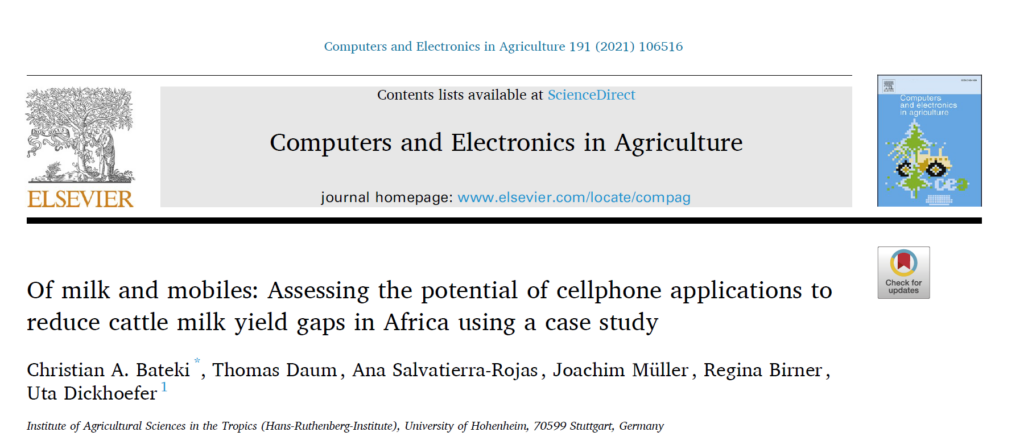by Christian Bateki, Thomas Daum, Ana Salvatierra-Rojas, Joachim Müller, Regina Birner, Uta Dickhoefer
There are growing expectations that Information and Communication Technology (ICT) applications could help improve on-farm yields amongst smallholder farmers in developing countries, and consequently, food and nutrition security. However, few studies have quantified the actual contribution of ICT applications on farmers’ yields, and these studies predominantly focused on crop production. We assessed the potential of ICT applications to close milk yield gaps among small- and medium scale dairy cattle farmers in Africa. First, we developed a theoretical framework summarizing biophysical and socio-economic constraints that foster milk yield gaps and discussed which constraints can be addressed using ICT applications. Second, using a case study of a feeding advice application for dairy cattle pre-tested with farmers in rural Kenya, we analyzed how much stand-alone the application could contribute to close dairy cattle milk yield gaps. Our findings suggest that ICT applications could help address some existing biophysical and socio-economic constraints fostering milk yield gaps, including data collection for breeding programs, feeding management advice, and facilitating access to markets and capital. Our stand-alone ICT application closed yield gaps by 2 % to 6 % on representative farms. Several factors may explain the limited actual contribution of selected ICT applications to reduce existing milk yield gaps, including the quality of the input data and models used in ICT applications, and more structural constraints that cannot be addressed by digital tools. Therefore, although ICT applications could help address constraints to achieving higher milk yields on dairy farms, a significant contribution to improve yields may only be achieved when conditions surrounding their use are adequate.
